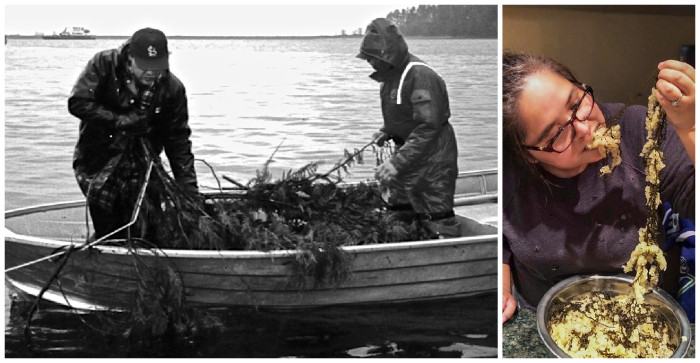Tsum’ush means ‘delicious’
by Tricia Thomas
For the Coast Salish people, the traditional season of the herring roe harvest begins late February and early March. The Hul’qumi’num word for the herring eggs is tsum’ush.
In specific areas around the Salish Sea, cedar or hemlock branches are placed in the water to gather the herring spawn. Along the shorelines, the sticky eggs naturally collect on seaweed and kelp which makes it easy for harvesting off the beaches.
After collecting the spawn on the branches, they are brought home and hung up to dry. When the roe easily came away from the branches, it was removed and left to dry some more before being stored away.
Michelle Antoine from Halalt First Nation (see photo) recalls: “When I was a kid, I remember going to the beach to see all the cedar boughs people put out for herring season and I couldn’t wait to eat the eggs! I remember having big feasts around my late Gran’s table – a tradition I now share with my kids.”
Herring roe on kelp were dried and the kelp were laid flat on top of each other, tied and stored in a box. Today the roe is often stored in the freezer.
This nutritious spring food can be eaten fresh, dried or rehydrated and cooked. It was traditionally served with salmonberry shoots and provided a good source of vitamin D after the dark winter. Herring roe is still featured at feasts and special occasions and often served with salmon, halibut and other seafood. It is delicious as a crunchy side dish or added to soups.




